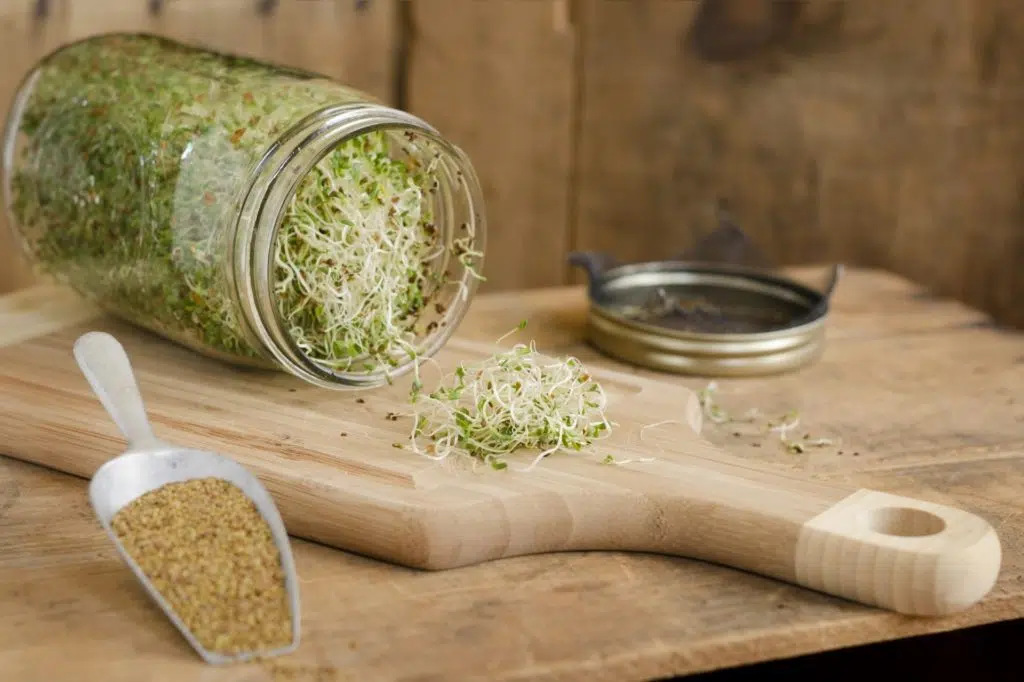I’d like to introduce the concept of your own Windowsill Farm.
You can be growing healthy things for your family, wherever you are!
One of the most important things for you to grow and sprout your own micro-greens, just like they have in the best fancy restaurants these days. What a lot of advantages these have! Fresh, healthy, relatively inexpensive. And you can’t buy them from the shop – because they rarely sell anything besides watercress. This will give you the nutrient boost that you can’t get from the iceburg lettuce that we so often see on the supermarket shelves, here in the UK!
Why sprout beans and seeds?
It has to do with persuading the seeds and beans to give up their nutrients. Seeds and beans don’t want to be eaten. Like anything else out there, they want to survive until they get to germinate and reproduce!
So they have a special little don’t-eat-me chemical, called lectins. Lectins act to discourage creatures consuming plants or seeds by binding to carbohydrate molecules found in cell membranes inside the gut. This disrupts the cell membranes, irritating the gut lining, and causing the creature in question to think twice about eating those plants or seeds again!
Lectins make pulses and seeds hard to digest. So to talk the grain or bean in question into giving up its lectin, we’re going to sprout it! Sprouting not only reduces lectins, but also transforms some of the carbohydrates inside the seed into proteins and fats as it prepares to grow, thus making it easier for our digestive systems to process.
What you need to get started:
A sprouter – which is just a jar with a lid that you can strain through. Bodum does a nice one that comes with its own little saucer – or you could just use a rubber band and some cheese cloth over the top of a jar.
Seeds suitable for sprouting. I recommend that you start with lentils and chickpeas. They are tasty and loaded with butyrate-producing resistant starch, as well as being gluten-free. The bugs in your gut will love you for providing these goodies! ; ) Broccoli seeds are great to sprout as well, and have many powerful health benefits. 1
How to sprout;
Fill your jar with dried lentils, chickpeas or a combination of both. The beans will triple in size, so don’t fill too full! Shoot for about ⅓ full, and cover with water, up to 2 inches below the lip of the jar. Don’t put an airtight lid on the jar – use the mesh lid that came with your sprouter or use cheesecloth and a rubber band.
Soak overnight. In the morning, drain the water out of the jar, replace the cloth and let the jar sit on the counter, out of direct sunlight. Every 12 hours, add water to the jar, give it a swish around and then drain it out again. After about 24-36 hours, you will start seeing little white tails as the beans begin to sprout. Depending on how many beans you’re sprouting and the room conditions (heat, etc) this process could take up to 4 days.
When they’re done, spread them on a double layer of paper towels to let them dry out a bit, and store them in an airtight container in the fridge.
You can add the sprouted lentils to soups, salads, smoothies or just eat a handful for a gut-healthy snack!














